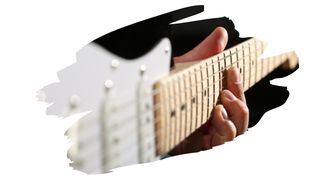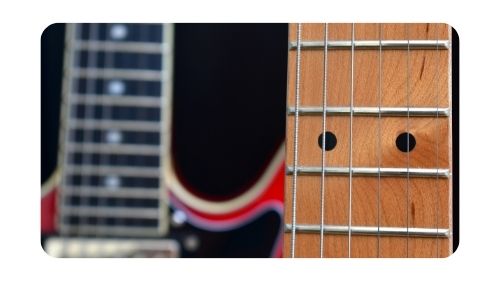If you’ve ever listened to someone perform on a maple guitar, you’ll notice the sound this tonewood produces is fantastically snappy.
Those maple tones have a bit of bite to them that really stands out. So it’s no surprise that this hardwood is popularly used to make guitar necks and fretboards.
But while this natural wood may play wonderfully, it doesn’t finish easily.
Maple wood is infamous for being a difficult to finish type of timber. It’s close grain makes it hard for penetrating stains and finishes to soak evenly into it.
So, if a penetrating oil finish isn’t typically the best option for a maple fretboard, what other choices do you have?
Well, here is where Tru-oil comes in. This oil-blend product is made of thinner stuff than say a natural oil such as Linseed oil or Tung oil.
Related Post: Tru-oil Vs Tung Oil: Which One’s Better For Your Guitar?
And while it does soak into wood like any other oil finish, it does more of its build-up on the surface instead.
If you want to seal and protect that otherwise bare maple fretboard, applying multiple thin coats of Tru-oil will give it a great finish. But, when applying Tru-oil to a fretboard, you need to limit yourself to just 5-7 very thinly applied coats.
Here’s why this is worth mentioning. You see, typically, Tru-oil finish is so thin that it takes some 12+ coats of the stuff to properly protect a guitar body. But, on a fretboard, you’ll need to be a bit less generous.
If you apply too many coats, (or coat that Tru-oil on too thickly), it will build up around the frets. And once it hardens, (because this is a drying oil that cures into a durable resin), fixing that mistake is going to be next to impossible. At least not without you having to do a whole lot of sanding.
So, what are some other things you need to know if you want to maintain that maple fretboard?

This post may contain affiliate links to products that we receive a commission for (at no additional cost to you). Learn more here.
Should You Oil A Maple Fretboard? And Does A Maple Neck Even Need A Finish?
Giving your guitar a regular touch up is perfectly fine. But, only if that guitar neck has been oiled and/or waxed. Particularly oiled finishes, as any oiled wood needs to be maintained.
Oil finishes like Linseed oil and Tung oil require maintenance – and need to be re-oiled every few months to a year.
But some maple fretboards come finished with a polyurethane coat.
Polyurethane is some tough stuff, and as a sealer it does a fantastic job at keeping water and oily grease out. As such, it doesn’t need re-application the way that oil-finishes do.
Related Post: When Should You Use Tru-oil Vs Wipe-On Poly? [3 Key Comparisons]
Plus, because poly does such a great job at keeping out absolutely everything, applying penetrating Tru-oil over poly isn’t worth it.
So, if you are finishing up a guitar build, and you are working on raw maple, then you should oil it. This will help both to enhance the look of that wood grain, and make it feel like silk.
But if that fretboard has already been finished with a poly coat, then it is not going to be worth your time and effort applying Tru-oil over it.
Related Post: Are Glossy Maple Guitar Fretboards Any Good?
So, Can I Put Tru-oil On A Fretboard? Or Will It Make It Sticky?
Tru-oil is a drying oil that hardens once its cured. Which means that, unlike non-drying oils like Mineral oil, it does not leave behind a greasy film on the surface of wood.
It also dries and cures much faster than say a Tung oil finish. So you don’t have to wait too long to begin playing your guitar.
All-in-all, Tru-oil leaves a hard resin that won’t gum up the fretboard. However, it can build-up around each fret if you aren’t too careful.
If you apply too much of this stuff, (without taking extra care to remove all and any excess), it’s resin could end up clogging those frets.
So, stick to half the amount of coats you’d otherwise apply to a guitar body. Which means 5 coats – applied as thinly as possible each time – should be your baseline. And only add more coats if needed.
Related Post: Tru-oil vs Linseed Oil: The Top 5 Things You All Wanted To Know

What Kind Of Oil Finish Can I Use On A Maple Fretboard?
You can apply most types of drying oil finishes (natural or blended).
Which means that natural drying oils such as Linseed oil, and pure Tung oil are on the approved list. It’s going to take a bit of elbow grease to get these to rub in evenly, but they’re great at protecting bare timber.
You can also use natural oil-blended finishes such as Danish oil (which mixes Linseed oil with varnish). As well as Tru-oil (which blends Linseed oil with some mineral thinning agents).
Related Post: Can You Apply Teak Oil On Maple Wood? (Best Practice Revealed)



